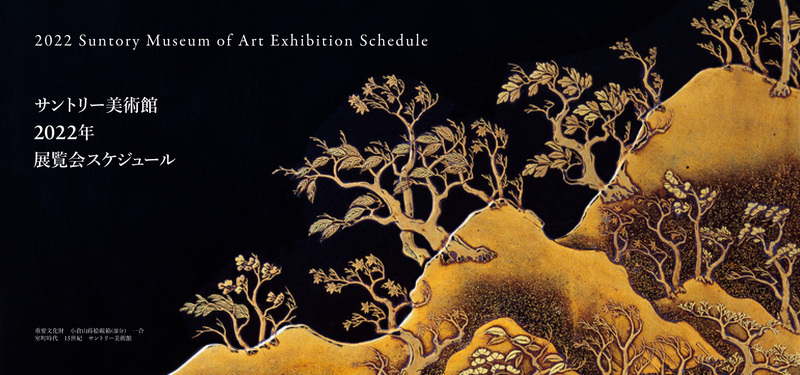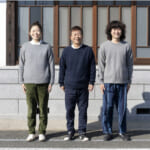
Suntory Museum of Art (Roppongi, Tokyo/ Director: Shingo Torii) will hold five exhibitions in 2022.
Since its opening in Marunouchi, Tokyo in 1961, the museum has based on the basic philosophy of “beauty in life”, and the museum message “Connecting beauty, opening beauty” with the opportunity of the relocation of Roppongi in 2007. activities that contribute to the development and dissemination of Japanese art.
In 2022, we will hold various events such as special exhibitions where masterpieces gather together from japan and overseas, and our own learning program. Please look forward to it.
■Daisize Memorial Special Exhibition
Shosoin Treasures Revived – Tenpyo’s Technique in Reproduction Imitation –
From Wednesday, January 26, 2022 to Sunday, March 27
Shosoin Treasure is about 9,000 items handed down to Shoso in Todaiji Temple, Nara. The full-fledged imitation production of Shosoin treasures began with the exposition held in Nara in the Meiji era, and from 1972 (1972) under the Imperial Household Agency Shosoin Office, many reproduction imitations that combine high artistry and academicity have been created by fusing skilled techniques with the latest research and research results.
In this exhibition, we will introduce masterpieces of reproduction imitation that challenged the beauty and technique of Tenpyo. We hope that you will feel the significance of inheriting traditional techniques through the resurrected Shosoin Treasures.
■Hokusai- Focusing on works from the British Museum (tentative name)
From Saturday, April 16, 2022 to Sunday, June 12
Katsushika Hokusai, one of the world’s most famous Japanese artists, is one of the most famous Japanese artists in the late Edo period. It is popular both in Japan and abroad, and the British Museum in particular houses many of Hokusai’s masterpieces obtained from several collectors.
This exhibition follows the transition of Hokusai’s painting industry, with masterpieces of japanese hand-drawn paintings, mainly Hokusai works owned by the British Museum. In addition, we will pay attention to the collectors who put Hokusai’s works at the British Museum, highlighting their love of Japanese art.
■- Scene of the heart – Song pillow (tentative name)
From Wednesday, June 29, 2022 to Sunday, August 28
Since ancient times, the Japanese have entrusted their thoughts to beautiful landscapes and expressed them in Waka poems. It will eventually be connected to a specific land, and it will become a “song pillow” where you can share the thoughts put into waka without knowing the actual scenery. Song pillows have colored life as a painting and craft design, but now that Waka is not familiar, it may be difficult to empathize with song pillows. Therefore, in this exhibition, we will try to share song pillows with everyone again through various works of art.
■Masterpieces of the Osaka Municipal Museum of Art (tentative name)
From Wednesday, September 14, 2022 to Sunday, November 13
The Osaka Municipal Museum of Art was opened in May 1936 with the aim of providing opportunities for citizens to interact with excellent art culture, enriching their lives, supporting the activities of artists, and contributing widely to the promotion of Osaka’s culture. The collection has been built over the years and has about 8,500 paintings, calligraphy, sculptures and crafts from Japan and China. In this exhibition, the Osaka Municipal Museum of Art will be closed in the fall of 2022 Reiwa for large-scale renovations, and will introduce the art of Oriental art that the museum is proud of in Tokyo.
■Famous Treasures of Chissin Temple
from November 30, 2022 (Wednesday) to January 22, 2023 (Sunday) (planned)
Cherry blossoms in spring, maple in autumn, autumn grass. The competition of beauty that colors the four seasons is the theme of eternal immortality of Japanese art. At Chizumiin, the head temple in Higashiyama, Kyoto, the gold-heki barrier painting group drawn in The Bodaiji Shounji Temple of Hideyoshi Toyotomi’s Kotsurumatsu has been carefully protected by a family led by Tohaku Hasegawa (1539-1610), a master of the Momoyama period, which is called Kano Eitoku. This time, it will be a valuable opportunity to collect and exhibit the famous treasures of Sohonzan Chizumiin in one place, and to be exhibited for the first time outside the temple the “cherry blossom map”, “maple map” and “pine and autumn grass map” that everyone knows.





GIPHY App Key not set. Please check settings